

How to Convince Investors. August 2013 When people hurt themselves lifting heavy things, it's usually because they try to lift with their back.
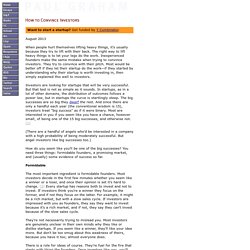
The right way to lift heavy things is to let your legs do the work. Inexperienced founders make the same mistake when trying to convince investors. They try to convince with their pitch. Most would be better off if they let their startup do the work—if they started by understanding why their startup is worth investing in, then simply explained this well to investors. Investors are looking for startups that will be very successful. Tom Kelley, David Kelley: "Creative Confidence"
100 LatAm Startup Founders. Institute for Innovation in Developing Economies (SEED) SEED bridges a critical gap in global efforts to address prosperity around the world.
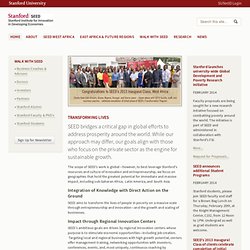
While our approach may differ, our goals align with those who focus on the private sector as the engine for sustainable growth. The scope of SEED's work is global—however, to best leverage Stanford's resources and culture of innovation and entrepreneurship, we focus on geographies that hold the greatest potential for immediate and massive impact, including sub-Saharan Africa, Latin America, and South Asia. Integration of Knowledge with Direct Action on the Ground SEED aims to transform the lives of people in poverty on a massive scale through entrepreneurship and innovation—and the growth and scaling of businesses.
Impact through Regional Innovation Centers SEED's ambitious goals are driven by regional innovation centers whose purpose is to stimulate economic opportunities—including job creation. Social Entrepreneurship. Design for Extreme Affordability. Many of our student projects continue after the course ends.

Whether a team needs more time to prototype, test, or sort out personnel and business issues, we connect the teams with the resources they need to be successful. Here are a few ways teams may continue working on their projects while at Stanford. Social E Lab Social E Lab was developed by the Extreme teaching team to give students the option to continue their project work over the summer. Our point of view. Students come to the d.school with an intense curiosity, a deep affinity for other people, and the desire to gain an understanding beyond their own experience.
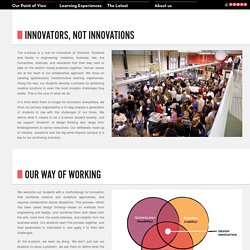
They come from every school on campus, and beyond. Instead of working on different pieces of the same project, they navigate each step in the innovation process together, leveraging their differences as a kind of creative engine. The design thinking process becomes a glue that holds teams together, allowing students to unleash intuitive leaps, lateral thinking, and new ways of looking at old problems. Our teaching teams, too, combine contrasting view points and problem-solving approaches. All of our classes are team taught by a robust mix of faculty and industry leaders, combining disciplines like computer science with political science, and CEOs with elementary school policy-makers. Www.mariposaleadership.com/wp-content/uploads/2013/03/Executive-Guide-to-Design-Thinking-03062013.pdf. Vijay Govindarajan's Blog: Non-Linear Change: An Example. Richard Pascale has given us an effective illustration of nonlinear change: the history of the high-jump event at the Olympics.
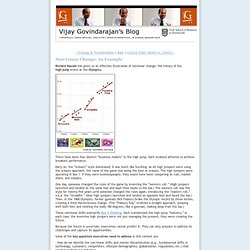
There have been four distinct “business models” in the high jump. Each enabled athletes to achieve breakout performance. Early on, the “scissors” style dominated; it was much like hurdling. As all high jumpers were using the scissors approach, the name of the game was being the best at scissors. The high jumpers were operating in Box 1. One day, someone changed the rules of the game by inventing the “western roll.” These nonlinear shifts exemplify Box 3 thinking. Because the future is uncertain, executives cannot predict it. Some of the key questions executives need to address in this context are: - How do we identify the non-linear shifts and market discontinuities (e.g., fundamental shifts in technology, customers, competitors, lifestyle/demographics, globalization, regulations, etc.) that could transform our industry?
Systems Thinking for Sustainability. Let’s play Jeopardy.
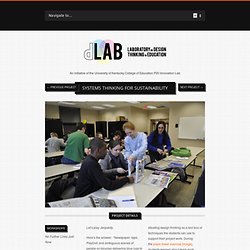
Here’s the answer: “Newspaper, tape, PlayDoh and ambiguous scenes of people on bicycles delivering blue jugs to men in white coats and boots.” Transformative Action Institute. Moldable Plastic » Instructions. The instructions below will get you started working with InstaMorph in a matter of minutes.
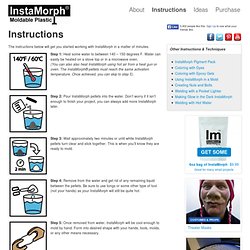
Step 1: Heat some water to between 140 – 150 degrees F. Water can easily be heated on a stove top or in a microwave oven. (You can also also heat InstaMorph using hot air from a heat gun or oven. The InstaMorph® pellets must reach the same activation temperature. Once achieved, you can skip to step 5). Step 2: Pour InstaMorph pellets into the water.
Step 3: Wait approximately two minutes or until white InstaMorph pellets turn clear and stick together. Step 4: Remove from the water and get rid of any remaining liquid between the pellets. Step 5: Once removed from water, InstaMorph will be cool enough to mold by hand. Step 6: Once you’ve got your InstaMorph creation finalized, let it cool to room temperature. We’d like to think that if you’re smart enough to realize the amazing possibilities of moldable plastic, we wouldn’t have to tell you this, but we’ll do it anyways…